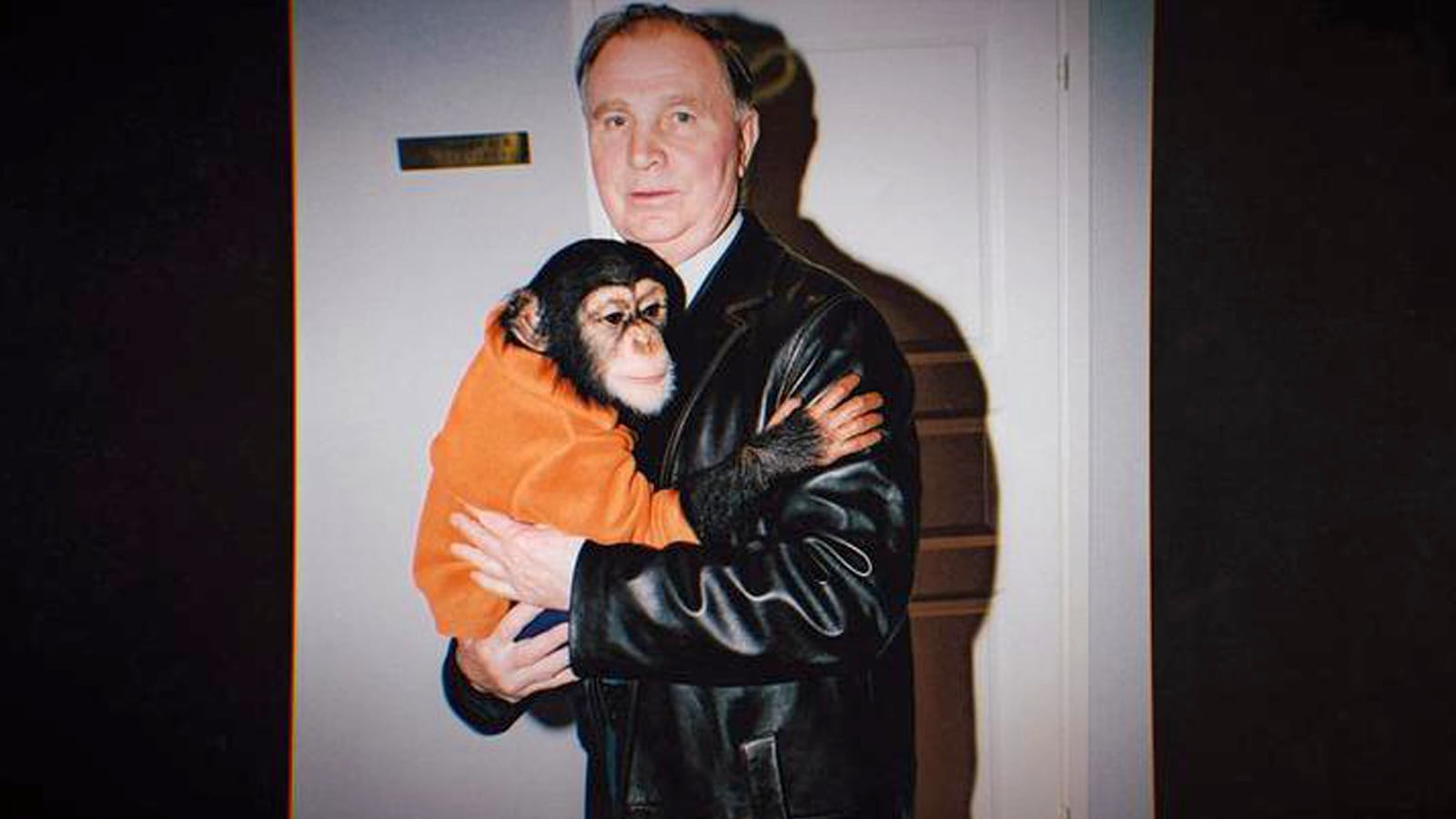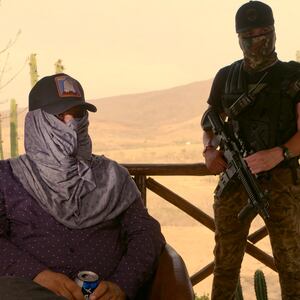The NHL delivers the best hockey in the world, but what it’s missing, Red Penguins makes clear, are free beer nights. And stripper-cheerleaders. And, of course, brew-guzzling bears.
Such are the lessons of Gabe Polsky’s fast, loose and crazy documentary (on VOD Aug. 4) about a brief, insane marriage between Cold War enemies. When the Soviet Union collapsed and the country’s premier hockey players bolted for the National Hockey League, Russia’s fabled Red Army squad turned to an unlikely source for reinvention: America, and in particular, Howard Baldwin and Tom Ruta, then-owners of the Pittsburgh Penguins. That duo, along with investors like Mario Lemieux and Michael J. Fox, saw an opportunity to bring capitalistic razzle-dazzle to the former communist stronghold. To accomplish that mission and head up their operation, they hired young, brash Steven Warshaw to be their “gunslinger in the Wild West.”
Motor-mouthed, bursting with energy, and amusingly uninhibited, the curly-haired Warshaw was an eager risk-taker (to put it mildly), and spending only a few minutes in his presence is enough to confirm Baldwin’s belief that “He just seemed like the perfect guy to send on an adventure like this.” While Warshaw may not have been a traditional choice to spearhead a venture such as this, his anything-goes attitude turned out to be ideal for 1993 Russia, where rigid communism had given way to chaotic, lawless democracy. As rowdy and illuminating archival footage elucidates, everything in the once-mighty nation was in total disarray, and that included the Red Army’s stadium, whose name “The Ice Palace” was almost laughably inappropriate given the ransacked, gone-to-seed condition it was in when Warshaw first arrived.
Though the Red Army team didn’t have any money, a respectable arena, or decent players, what it did have were two holdovers from its old regime: Viktor Tikhonov, the legendary hard-liner coach who was also a military veteran, and Valery Gushin, the general manager whose ties with the Party were as tight as his drinking habit was excessive. Warshaw struck both of these old-schoolers as a frantic, clownish American huckster, and Gushin promptly gave him the nickname “asshole with a handle”—which, in fact, was somewhat fitting, given the rancid smell that Warsaw claims permeated everything in this new Russia, a stench he refers to here (quoting Marlon Brando in Last Tango in Paris) as “the ass of death.”
Under Warshaw’s gonzo stewardship—with assistance from Victor Gusev, his VP of media and public relations, who made sure the American hewed to proper cultural customs and behavior—the Red Penguins came to life, replete with a new penguin-and-star logo, spiffy jerseys, a colorful mascot (played by an even more colorful actor), and outrageous gimmicks. To drum up interest in the floundering team, Warshaw, ever the carnival barker, turned to his nearest resource: the strip club located in the Ice Palace’s basement. It wasn’t long before that establishment’s dancers were entertaining crowds in-between periods, removing clothing while sashaying behind the Zamboni. Such hijinks soon became the norm at Red Penguins games, which became renowned for their promotional nights—like free beers for everyone, including teenagers—and goofball stunts, highlighted by trotting a bear out to center ice and having him chug a few cold ones.
The fact that, back in the locker room, said bear took off a player’s finger was merely par for the Red Penguins course. In a country now devoid of rules, Warshaw enticed the unhappy citizenry with absurdly outlandish tactics. He also wooed them with good ol’ fashioned American commercialism, be it advertising on the rink walls, Russia’s first-ever celebrity endorsement (Tikhonov’s hit TV spot for Vicks cough drops), and car giveaways. Red Penguins revels in this madness, bringing it to life with a vibrant mix of interviews, archival clips and photographs, capturing the spirit of madcap entrepreneurial abandon that turned the team into a phenomenon, not only in Russia but also here in the States, where Disney CEO Michael Eisner became so enamored with the Red Penguins that, according to both Warshaw and Baldwin, he seriously considered investing in the team as a means of securing an entertainment foothold in Russia.
Eisner apparently now denies such interest. Far more candid is Gushin, who admits—while laughing hysterically—that he did plant a mafia spy in Warshaw’s office to keep tabs on his business dealings. Mobsters are eventually a prime focus of Red Penguins, since no sooner has the team taken off than it becomes a coveted prize for the country’s gangsters, who were so prevalent in 1993-1994 Russia that corruption wasn’t merely a stain upon the socio-political system, but “it was the system,” as ex-KGB prosecutor Vladimir Golubev states. In such a volatile land, lethal danger was everywhere. And the ability to keep a by-the-books business afloat was nearly impossible for foreigners like Ruta and Baldwin, who learned first-hand about Russian lunacy during a visit to the country marked by a scary sit-down with a general and a night out at a restaurant where customers gleefully bid on an up-for-auction fish.
The incompatibility of Russian and American cultures—at least during this precarious period—is the backdrop for Red Penguins’ raucous portrait of DIY capitalism and the bonkers personalities that tried to bring glitz and glamor to a nation raised with a hammer and sickle. To further provide a feel for the atmosphere in which Warshaw and company operated, director Polsky conducts interviews with businessman Alimzhan Tokhtakhunov, who’s ultimately revealed to have once been one of Interpol’s most wanted criminals—and thus precisely the sort of shady fellow that made Warshaw’s time in Russia alternately exhilarating and harrowing, as well as brief, since it wasn’t long before the mafia decided that it was ready to claim full control of its national team.
Red Penguins concludes with Russia’s transition of power from boozy Boris Yeltsin to ruthless Vladimir Putin, a shift that epitomizes the country’s short-lived—and missed—opportunity to embrace something other than authoritarianism. In that sense, the Red Penguins weren’t merely a wacko flash in the pan—they were also a symbol of the freedom and fun that Russia wasn’t entirely ready for, interested in, or capable of handling.


